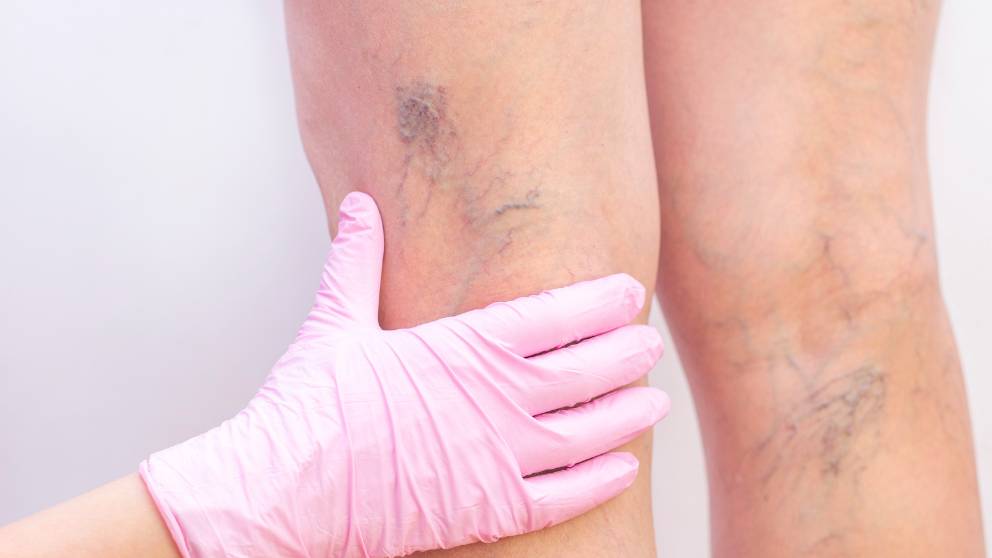Imaging & Interventional Specialists are experienced and successful in dealing with consequences of peripheral vascular disease (PVD) including leg cramps, burning and numbness, skin changes, leg ulcers and leg discoloration. Our board-certified vascular physicians offer in office diagnostic testing and will customize a treatment plan for your condition. Our medical team will focus on treating the peripheral vascular disease to eliminate or minimize leg pain, leg cramps, leg ulcers and leg discoloration or other symptoms.
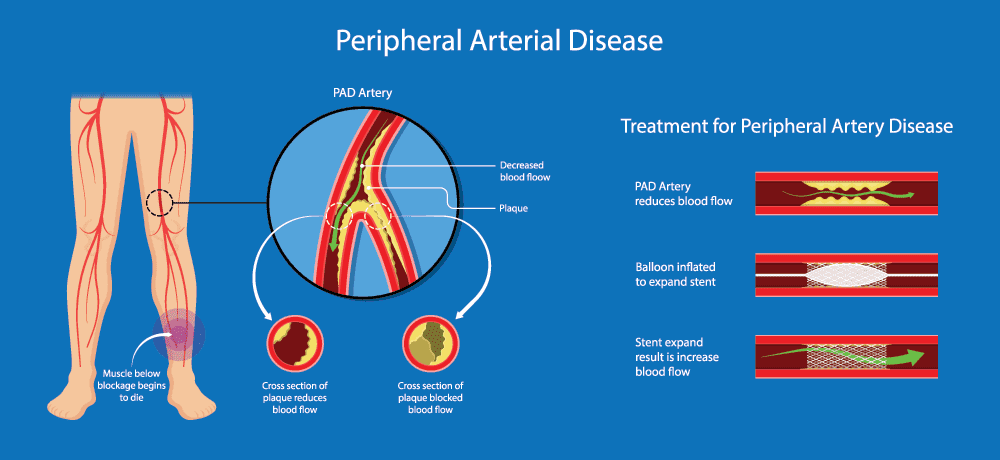
Table of Contents
ToggleWhat is Peripheral Vascular Disease and How is It Caused?
PVD can be caused by changes to the arteries or veins of the legs. In arteries as we get older, fat can deposit leading to strokes, heart attacks and peripheral arterial disease. The fatty plaques that build up in the legs can lead to bring sensations in the feet, numbness, cramps, sores and ulcers. You skin may become shiny and brittle and there may be hair loss. If not treated plaque buildup can lead to critical limb ischemia, gangrene and the need for amputation.
In veins as we get older valves that help return blood to the heart may begin to fail so the blood which normally returns to the heart builds up in you legs. These can cause bulging vessels and pain, discoloration, ulcers often at the ankle, and swelling. Clots may for in the veins since the blood cannot flow. These can become infected. If clots form in the deep veins of the leg this is very concerning since these can break of an travel to the lungs (pulmonary embolus) and be life threatening.
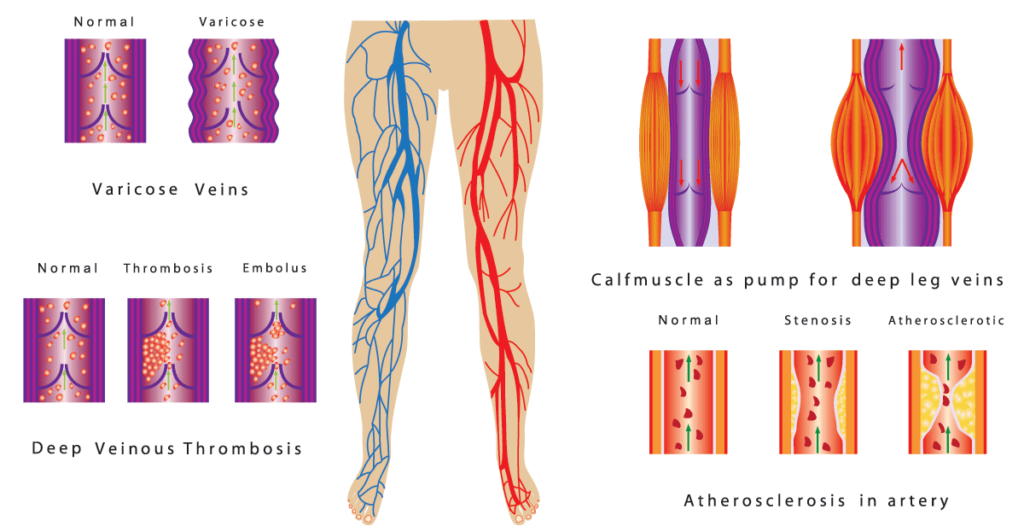
Peripheral vascular disease is decreased blood caused by blockage of the arteries bringing blood to the leg and/or valve failure in veins causing blood to pool in the legs is caused by narrowing of the arteries due to atherosclerosis causing decreased blood flow. Risk factors include for peripheral vascuar disease include age ( greater than 50 years old), history of heart disease, family history of high cholesterol, high blood pressure or PVD. Other risk factors which can be treated include: diabetes, high cholesterol, high blood pressure, coronary artery disease, smoking, and being overweight.
How Do Imaging & Interventional Specialists Find Out Whether You Have Peripheral Arterial Disease?
The Imaging & Interventional Specialist team has in office diagnostic technologies to help identify whether you have peripheral vascular disease and how severe it is. Besides our careful history and physical exam, the team at Imaging & Interventional Specialists may obtain ultrasound studies, blood pressure measurements (ankle-brachial index), tissue oxygenation levels, angiography or other advanced imaging (for example Magnetic Resonance Imaging) to aid with accurate diagnoses and help develop your treatment plan, if needed. Our specialists can determine whether it is you arteries or veins or both that are contributing to you leg symptoms and customize a treatment plan for you.
What Advanced “Pinhole” Procedures Does Imaging & Interventional Specialists Offer for Peripheral Vascular Disease?
For peripheral vascular disease (PAD) Imaging & Interventional Specialists will determine if non-surgical vascular interventional radiology (VIR) procedures can address your situation or whether lifestyle changes, treatment of pre-existing conditions, or surgery is a better option. Lifestyle changes include exercise and quitting smoking. Aggressive treatment of diabetes, high blood pressure and high cholesterol is important. Medicines that improve blood flow and relax the blood vessels may also be of benefit.
For peripherial vascular disease Imaging & Interventional Specialist MDs may obtain ultrasound studies, blood pressure measurements (ankle-brachial index), tissue oxygenation levels, angiography or other advanced imaging (for example Magnetic Resonance Imaging) to aid with accurate diagnoses and help develop your treatment plan, as needed.
Angiography: taking pictures of your arteries to diagnose where there are problems
Angioplasty: introducing a small balloon to open up areas that are closed due to plaque
Stent placement: placing a cylindrical brace to hold your artery open
Atherectomy: introducing a tiny instrument that will crear some of the plaque on the inside of your disease artery
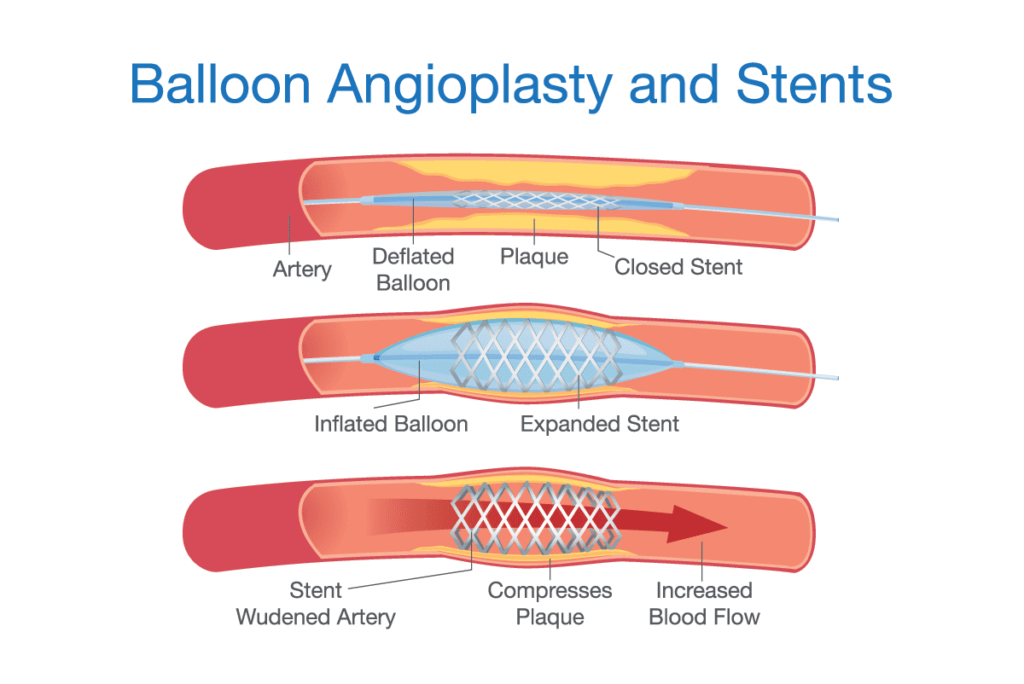
For peripheral venous disease “pinhole” procedures are used to address the symptoms due to failing valves. Bulging veins, pain, discoloration and ulcers due to failing valves in superficial veins treated by closing down (ablating) these veins. The “pinhole” procedure our specialists use include using ultrasound to guide miniaturized equipment to your distended, problem veins. Then the veins are closed (ablated) by
Endovenous laser ablation: Lasers cause the culprit veins to close off
Radiofrequncy vein ablation: Radiofrequency waves cause the culprit veins to close By closing off the superfical veins the symptoms due to the distended veins and faulty valves are eliminated.
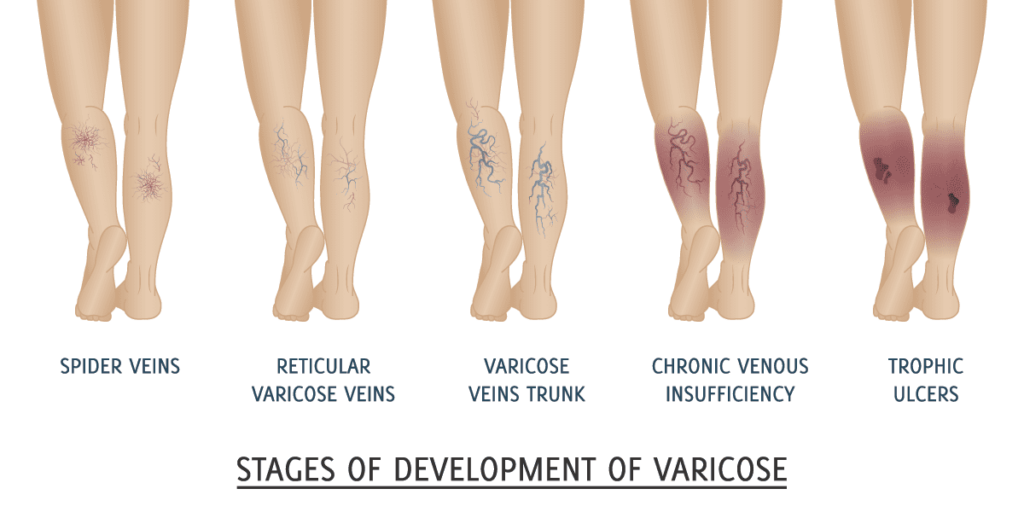
In deep veins failing valves can cause deep vein thrombosis. Our specialist can guide through the treatment options best for your particular situation. In chronic disease deep veins of the legs and pelvis can become narrowed slowing or stopping blood return from the legs. Our specialis can use particular “pinhole” procedures:
Venography: taking pictures of your veins to diagnose where there are problems
Venoplasty: introducing a small balloon to open up areas that are closed due to stenois, fibrosis or thrombus
Stent Placement: placing a cylindrical brace to hold your vein open
Embolectomy: introducing a tiny instrument that will remove the blockage on the inside of your diseased vein – opening it up
Imaging & Interventional Specialists “Pinhole” Procedures: Fast Recovery, Less Risk, Less Pain, Comfortable Setting
Our experienced board-certified specialists successfully perform “pinhole” procedures every day offering this region leading, state-of-the-art solutions to peripheral arterial disease.. Our non-surgical image guided procedures are cutting edge technology without the cutting, without the scalpel. You leave with a Band-Aid!
- Procedures are usually done in a comfortable outpatient setting with familiar friendly staff
- Pinhole procedures offer fast recovery, less risk, and less pain

Why Imaging & Interventional Specialists?
Imaging & Interventional Specialists are leaders in interventional radiology and experts in the non-surgical procedures that will cure or minimize your peripheral vascular disease.
Using state-of-the-art equipment, our experienced board-certified specialists are focused on your best outcome.
It is important to determine whether you have peripheral arterial disease since this can progress to gangrene due to critical limb ischemia. At Imaging & Interventional Specialists board certified physicians offer in-house testing to determine the cause and develop an individualized treatment program for your peripheral arterial disease.

